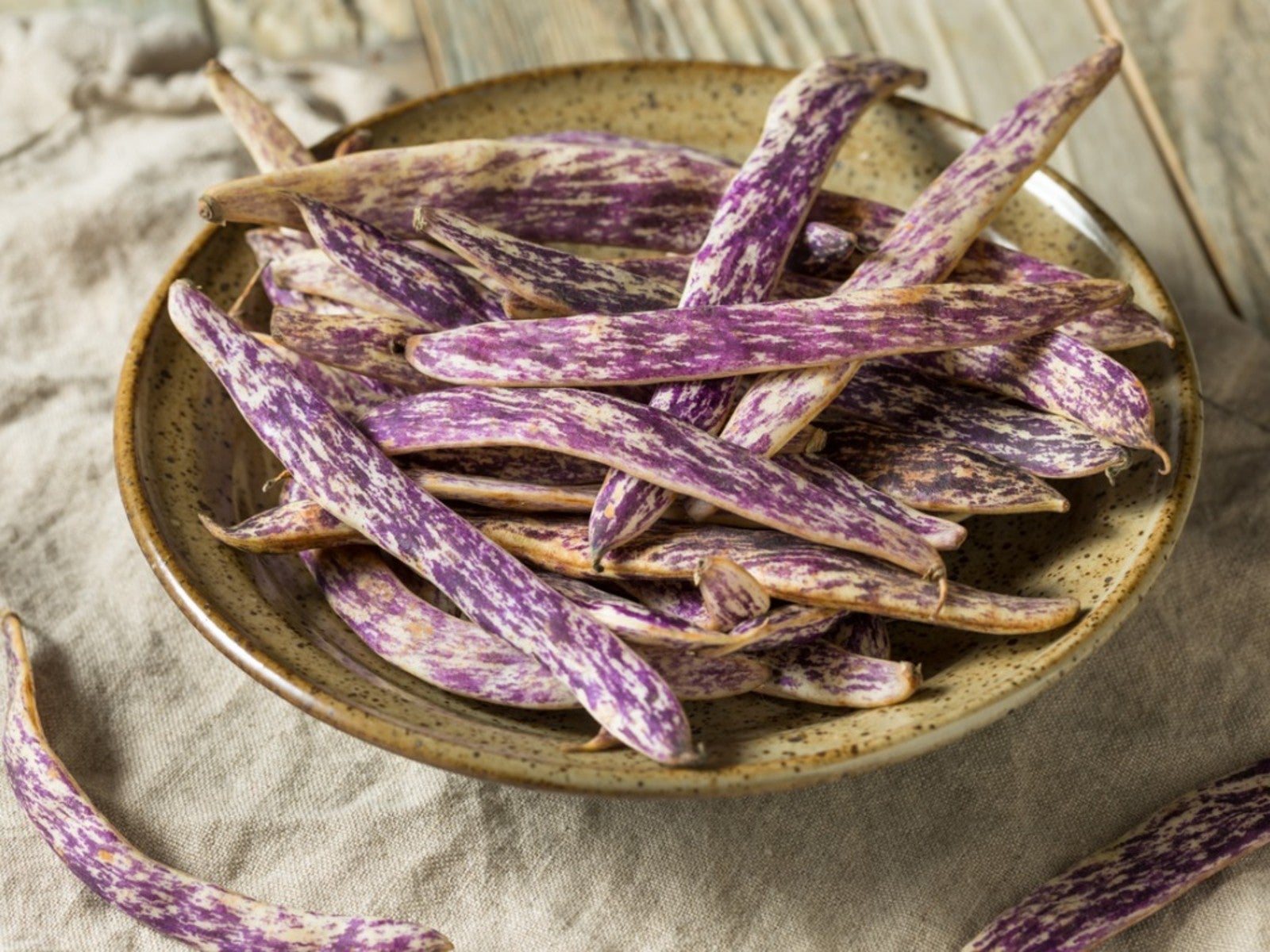Dragon Tongue Bean Plant Care – How To Grow Dragon Tongue Beans


The dragon tongue bean plant is a bush bean which you can grow as you would any other bush bean variety. What makes dragon tongue special is its unique appearance, delicate flavor, and texture. The pods are striped with purple and can be eaten whole or left to mature and be shelled to harvest the beans.
About Dragon Tongue Beans
This is an heirloom bush bean variety with origins in the Netherlands. Other names for dragon tongue are ‘Dragon Langerie’ and “Merveille de Piemonte.” The pods of dragon tongue have no strings and are yellow with dramatic purple stripes. They grow five to eight inches (13-20 cm.) long and are flattened. The bush plants grow 24 to 30 inches (61-76 cm.) tall.
The uses of dragon tongue beans in the kitchen are dual; you can eat them fresh like a snap bean or as shelled beans. As snap beans dragon tongue has a sweet, juicy, and delicate flavor. They are not fibrous. You can cook them or eat them raw, but the pretty stripes will fade with cooking.
How to Grow Dragon Tongue Beans
Growing dragon tongue beans is the same as any other bush bean. Unlike pole beans, you will not need a trellis or other structure for the plant to climb as it will stay short and bushy. You can direct sow seeds in the spring once the danger of frost has passed.
The soil should drain well and ideally be slightly acidic. Give your beans a sunny spot and plenty of room to spread out between each other and additional rows. Like other beans these plants will need a lot of water. Water regularly throughout the growing season, especially when rain is less than one inch (2.5 cm.) per week.
When to Pick Dragon Tongue Beans
The time to maturity for picking and using these as snap beans is 55 to 60 days. If you want shelled beans, leave pods on the plant to fully mature, about 80 days. As you harvest the immature beans you can expect more to grow and to get a bigger harvest. Simply snap them off when you are ready to use them.
Since you’ve worked so hard in the garden this summer we want to show off the fruits (and veggies) of your labor! We invite you to join the Gardening Know How Virtual Harvest Show by submitting photos of your harvest!
Gardening tips, videos, info and more delivered right to your inbox!
Sign up for the Gardening Know How newsletter today and receive a free copy of our e-book "How to Grow Delicious Tomatoes".

Mary Ellen Ellis has been gardening for over 20 years. With degrees in Chemistry and Biology, Mary Ellen's specialties are flowers, native plants, and herbs.
-
 8 Perfect Flowers To Plant With Tomatoes To Boost Yields & Banish Pests
8 Perfect Flowers To Plant With Tomatoes To Boost Yields & Banish PestsDon’t forget flowers when choosing companion plants for your tomato beds or pots. These pretty, fragrant blooms add beauty but are also highly beneficial.
By Mary Ellen Ellis
-
 Want The Longest Lasting Hydrangea Flowers? Grow These 8 Panicle Hydrangea Varieties
Want The Longest Lasting Hydrangea Flowers? Grow These 8 Panicle Hydrangea VarietiesFor ornamental shrubs that deliver the longest flowering seasons with plush blooms and delicate hues, these panicle hydrangea varieties are essential in your yard
By Tonya Barnett